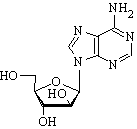Recent research shows that levofloxacin is a worthy aid in comanaging cataract cases.
When comanaging cataract surgery cases, it's important to fight infection above and below the ocular surface. One drug that can help in that respect is levofloxacin (Quixin).
Two important points
Before we discuss the research on levofloxacin, you need to remember two important findings.
First, in "Spectrum and Susceptibilities of Microbiologic Isolates in the Endophthalmitis Vitrectomy Study," Han et al. found that coagulase-negative, gram-positive micrococci caused 70% of endophthalmitis cases.
Second, because most surgeons prefer the clear corneal incision technique, you'll need a drug that's effective against infection. Levofloxacin is such an agent, as Chris Ta et al. illustrated in a poster at this year's Association for Research in Vision and Ophthalmology meeting.
Fluoroquinolone leader
In "Antibiotic Susceptibility Pattern of Coagulase-Negative Staphylococci in Patients Undergoing Intraocular Surgery," Dr. Ta's group compared 21 antibiotics to see if they covered coagulase-negative staphylococci. They found that levofloxacin had the highest susceptibility (91%) when compared to older fluoroquinolones, such as ciprofloxacin, norfloxacin and ofloxacin.
In addition, Dr. Ta's group looked at resistance. They found that levofloxacin provided the least resistance to most coagulase-negative staphylococci (5%). Interestingly, the other three fluoroquinolones had high percentages, ranging from 18 % to 23%.
These results show that almost one out of five patients placed on an older fluoroquinolone may not receive coverage of an organism that causes a high percentage of endophthalmitis.
You can take it with you
Once again, Optometric Management is pleased to bring you the attached Pocket-Sized Ophthalmic Drug Guide, sponsored by Santen. This quick reference, which you can fold and keep in your pocket, will help you prescribe appropriately and accurately for your patients.
What's New, What's Novel, What's Gone?
In addition to the levofloxacin research, this past year gave us new drugs, new ways to use old drugs, novel drug-delivery strategies and discontinued drugs:
* Topical apraclonidine 0.5% or 1.0% (lopidine) can be used in place of cocaine to diagnose Horner's pupil. lopidine dilates the affected pupil.
* Paremyd is back on the market after 5 years. This fixed combination of tropicamide 0.25% and hydroxyamphetamine 1.0% is an excellent mydriatic with minimal cycloplegic effects.
* Ocuvite PreserVision is a vitamin/mineral supplement that contains the same ingredients used in a recent clinical study sponsored by the National Eye Institute (NEI): Vitamins C and E, beta-carotene, zinc and copper. The NEI study examined patients with moderate or advanced age-related macular degeneration (AMD) and determined that the aforementioned formulation reduced the risk of progression of AMD by about 25%.
* Nature's Tears and Tears Again Liposome Lid Spray both treat dry eye by dispensing a spray to the eyes.
* Preservative-free tetracaine is no longer commercially available. I used it occasionally for patients who were allergic to preservatives in our standard topical anesthetic agents.
* Isosorbide (Ismotic) has been discontinued. For patients needing oral hyperosmotic therapy, such as in angle-closure glaucoma, our only option now is glycerin (Osmoglyn).
* Bichloracetic acid, a treatment kit often used for removing verrucae from the eyelids, is no longer available. An alternative product is trichloroacetic acid (Tri-Chlor).
* Vidarabine (Vira-A), an antiviral ointment used to treat herpetic eye infections, has been discontinued. The more commonly used trifluridine 1.0% (Viroptic) is still available from King Pharmaceuticals.
-Jimmy D. Bartlett, O.D.
Copyright Boucher Communications, Inc. Jun 2002
Provided by ProQuest Information and Learning Company. All rights Reserved



